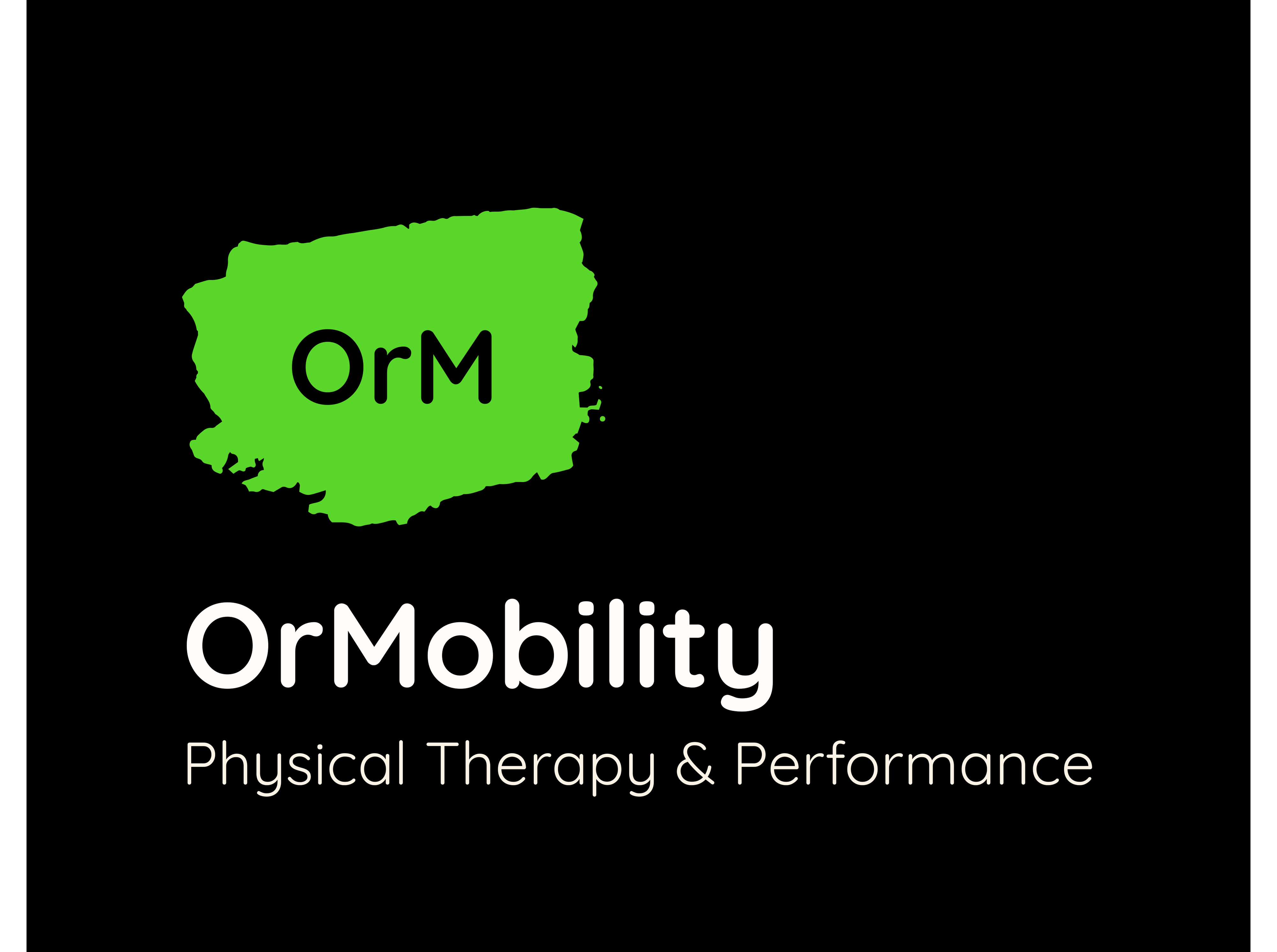Hand pain is a common issue that can stem from various hand pain causes, including injuries, medical conditions, and repetitive use. Whether due to arthritis, nerve compression, tendon disorders, or fractures, chronic hand pain can significantly affect daily activities, making tasks like writing, gripping, or typing difficult. Understanding the underlying reasons for hand discomfort and exploring effective hand pain treatment options is crucial to maintaining hand function and reducing pain.
From osteoarthritis and rheumatoid arthritis to carpal tunnel syndrome and tendinitis, different conditions contribute to joint pain, stiffness, and swelling. Additionally, overuse injuries caused by repetitive gripping movements or poor ergonomics can lead to tendinopathy, tendonitis, and nerve compression. This guide explores the causes of hand pain, diagnostic methods, and both traditional and advanced hand pain from overuse treatments to provide relief and improve mobility.
Common Causes of Hand Pain
Hand pain can arise from a variety of conditions, ranging from arthritis to nerve damage, and it is particularly prevalent in older adults. Hand pain is estimated to affect between 12% and 21% of the population, with osteoarthritis and joint inflammation being among the leading contributors. Identifying the specific cause of joint pain, wrist pain, or finger stiffness is essential in determining the best hand pain treatment plan. Early intervention and proper care can help minimize discomfort and prevent long-term mobility issues.
Arthritis
Arthritis is one of the most common hand pain causes, affecting millions of people worldwide. Studies show that approximately 14% of the population experiences hand-related symptoms, with a higher prevalence among women and individuals aged 50 and older. This condition results from joint inflammation, leading to pain, swelling, and stiffness, which can significantly affect daily tasks. Osteoarthritis (OA) is a degenerative joint disease that occurs when cartilage wears down over time, leading to joint pain and difficulty gripping. Another major type, rheumatoid arthritis (RA), is an autoimmune disorder in which the immune system attacks the joint capsule, causing severe inflammation, swelling, and deformity, often influenced by genetic links.
Carpal Tunnel Syndrome
Carpal tunnel syndrome occurs when the median nerve is compressed within the wrist passageway, leading to numbness, pins and needles, and hand discomfort. This condition often develops due to repetitive motion injuries, such as prolonged typing, assembly line work, or frequent use of handheld devices. Over time, the pressure on the median nerve can result in weak thumb strength, difficulty gripping, and persistent wrist pain. Treatment options include wrist splints, ergonomic changes, anti-inflammatory medications, and, in severe cases, surgical techniques like carpal tunnel release surgery.
Tendinitis
Tendinitis refers to inflammation of the tendons, which commonly occurs due to overuse, repetitive gripping movements, or trauma. Tendon problems, such as de Quervain’s disease and lateral epicondylitis, are common forms of tendinopathy that lead to pain, swelling, and reduced flexibility. If left untreated, chronic tendinitis can result in long-term joint stiffness, weakness, and impaired function. Treatment options include physical therapy, NSAIDs, splinting, and ergonomic changes to reduce stress on the tendons.
Trigger Finger
Trigger finger, also known as stenosing tenosynovitis, occurs when the tendon sheath thickens, restricting normal finger movement. This condition is often linked to tendon disorders and can cause pain, swelling, and difficulty bending or straightening the affected finger. In more severe cases, the finger may become locked in a bent position, leading to permanent stiffness if left untreated. Treatments include splinting, anti-inflammatory medications, steroid injections, and in severe cases, minimally invasive hand surgery.
Dupuytren’s Contracture
Dupuytren’s contracture is a hereditary condition that leads to the abnormal thickening of the fibrous tissue in the palm. Over time, this tissue thickening causes fingers to curl inward, making it difficult to straighten them fully. This condition progresses slowly, but in advanced stages, it can lead to significant hand deformity and functional limitations. Treatment options include steroid injections, splinting, physical therapy, and, in severe cases, surgical intervention.
De Quervain’s Tenosynovitis
Also known as de Quervain’s disease, this condition affects the tendons on the thumb side of the wrist, leading to tendon sheath swelling and pain. It commonly develops due to repetitive motion injuries, such as frequent texting, gaming, or lifting objects improperly. Symptoms include wrist pain, difficulty gripping, and tenderness along the thumb and wrist area. Treatment typically includes thumb splints, anti-inflammatory medications, and physical therapy, with surgical techniques being considered for severe cases.
Ganglion Cysts
A ganglion cyst is a fluid-filled lump that forms on tendons or joints, usually in the wrist or fingers. These cysts contain synovial fluid and can sometimes lead to nerve compression, causing pain, numbness, or restricted hand movement. While some cysts disappear on their own, others may require aspiration (fluid drainage) or minimally invasive hand surgery if they cause significant discomfort. In some cases, splinting may help alleviate symptoms by reducing joint movement.
Fractures and Dislocations
Fractures, dislocations, ligament injuries, and nail bed injuries can cause significant wrist pain, swelling, and dysfunction. Injuries such as basal joint fractures and tendon flexor injuries require immediate medical attention to prevent long-term complications. Treatment options include splinting, casting, and surgical techniques such as ligament reconstruction and tendon interposition (LRTI). Proper rehabilitation through physical therapy that targets hand pain is crucial for restoring strength and function after an injury.
Hand Pain from Overuse

Repetitive hand movements can lead to chronic hand pain from overuse, making everyday tasks increasingly difficult. Whether caused by work-related activities, sports, or frequent use of electronic devices, overuse injuries can gradually worsen if not properly managed. These conditions often stem from improper posture, excessive strain, or continuous pressure on the joints, muscles, and tendons, leading to inflammation and discomfort. Without appropriate hand pain from overuse treatment, these issues may progress to tendonitis, nerve compression, or joint damage, requiring medical intervention.
Repetitive Strain Injuries (RSIs)
RSIs develop from repetitive motion injuries, including excessive typing, lifting, or gripping, which place continuous stress on the muscles and tendons. Tendonitis, carpal tunnel syndrome, and de Quervain’s tendinopathy are common RSIs that cause persistent pain, stiffness, and reduced grip strength. Over time, these conditions can lead to chronic inflammation, nerve compression, and limited hand mobility, making it difficult to perform daily tasks. Proper ergonomic adjustments, stretching routines, and rest periods are essential in preventing and managing RSIs before they become severe.
Occupational Factors
Jobs requiring prolonged computer software use, assembly line work, or tool handling increase the risk of hand nerve entrapment, nerve damage, and ligament injuries. Repetitive gripping, awkward wrist positions, and excessive force can lead to joint inflammation and long-term tendon disorders. Workers in physically demanding industries, such as manufacturing, construction, and healthcare, often develop chronic wrist pain, numbness, or tingling sensations due to continuous overuse. Implementing ergonomic changes, using wrist splints, and taking frequent breaks can significantly reduce the risk of occupational hand injuries.
Sports-Related Overuse
Athletes engaging in golf, tennis, rock climbing, or weightlifting often experience weak thumb, wrist pain, and hand discomfort due to excessive strain on the flexor muscles. Repeated impact and gripping movements can lead to tendonitis, ligament sprains, and joint inflammation, which may worsen over time if not properly treated. Sports involving racquets, barbells, or climbing holds can also contribute to conditions like De Quervain’s tenosynovitis and lateral epicondylitis, commonly referred to as “tennis elbow.” Incorporating targeted physical therapy, strength training, and rest periods is essential in preventing long-term damage and maintaining optimal hand function.
Diagnostic Approaches
Accurately diagnosing hand pain causes is essential for determining the most effective treatment plan. Since hand pain can result from joint inflammation, nerve compression, or repetitive motion injuries, doctors use a combination of physical examinations, imaging techniques, and nerve conduction studies to identify the underlying issue. Early diagnosis is crucial in preventing long-term complications and ensuring that the appropriate hand pain treatment is implemented as soon as possible.
Physical Examination
Doctors assess joint inflammation, swelling, range of motion, and nerve function to identify hand pain causes and determine the severity of the condition. A thorough physical exam includes grip strength tests, reflex assessments, and evaluating signs of muscle atrophy or weakness. In some cases, a hand therapist may assist in identifying functional impairments and recommending appropriate physical therapy that targets hand pain. Early diagnosis through physical examination can help prevent further joint deterioration and long-term mobility issues.
Imaging Techniques
X-rays, MRIs, and ultrasound scans help detect fractures, joint capsule damage, hand tumors, and ligament injuries, providing a clear view of structural abnormalities. X-rays are commonly used to diagnose arthritis, fractures, and basal joint arthritis, while MRIs and ultrasounds help detect soft tissue injuries, tendon sheath swelling, and nerve compression. 3D printing technology is also emerging as a valuable tool in creating patient-specific anatomical models for pre-surgical planning. These imaging techniques play a crucial role in determining the most effective hand pain treatment plan and guiding minimally invasive hand surgery when necessary.
Nerve Conduction Studies
A nerve conduction study assesses the median nerve, ulnar nerve compression, and sensory nerves to diagnose cubital tunnel syndrome, peripheral neuropathy, or nerve damage. This diagnostic test measures the speed and strength of electrical signals traveling through the nerves, helping to pinpoint areas of nerve entrapment or dysfunction. It is particularly useful for conditions like carpal tunnel syndrome, motor nerve disorders, and chronic hand numbness. If nerve dysfunction is detected, treatment options may include splinting, anti-inflammatory medications, or in severe cases, surgical techniques to relieve nerve compression.
Comprehensive Hand Pain Treatments
Effective hand pain treatment involves a combination of non-surgical interventions, physical therapy, and, in severe cases, surgical procedures. Treatment plans are tailored based on the severity of the condition, whether the pain is caused by arthritis, nerve compression, tendinopathy, or fractures. Alternative treatments, anti-inflammatory medications, and ergonomic adjustments also play a significant role in managing chronic pain and improving hand function. By addressing the root cause and using a multidisciplinary approach, individuals can achieve long-term relief and prevent future hand injuries.
Non-Surgical Interventions
For many individuals, hand pain treatment can be effectively managed without the need for surgery. Non-surgical interventions, such as physical therapy, splinting, anti-inflammatory medications, and ergonomic adjustments, can help reduce joint inflammation, improve mobility, and alleviate discomfort. These treatments are particularly beneficial for conditions like osteoarthritis, tendonitis, carpal tunnel syndrome, and repetitive strain injuries. By implementing a combination of traditional treatments and alternative therapies, many patients can achieve significant pain relief and restore hand function without invasive procedures.
Physical Therapy
Physical therapy that targets hand pain is an essential non-surgical approach that helps strengthen muscles, reduce stiffness, and improve range of motion. A hand therapist can create a personalized rehabilitation program to address specific conditions like arthritis, carpal tunnel syndrome, and tendinopathy. Treatment methods may include manual therapy, ultrasound therapy, and targeted strengthening exercises to promote healing and restore functionality. For those seeking expert care, Physical Therapy Roseburg offers specialized programs designed to reduce hand pain, enhance mobility, and prevent further complications. Regular physical therapy sessions can also help prevent further joint deterioration and long-term mobility issues.
Medications
NSAIDs (nonsteroidal anti-inflammatory drugs), such as ibuprofen and naproxen, are commonly used to reduce inflammation, swelling, and pain associated with conditions like arthritis, tendonitis, and joint injuries. In cases of severe joint inflammation or tendon disorders, steroid injections may be recommended to provide targeted relief. These injections help reduce pain and swelling in affected areas, improving hand mobility and function. While medications can effectively manage symptoms, they are often combined with physical therapy or splinting for optimal results.
Splinting and Bracing
Wrist splints, thumb splints, and braces play a crucial role in providing joint support and minimizing strain on injured tissues. Splinting is especially beneficial for conditions like trigger finger, carpal tunnel syndrome, and basal joint arthritis, as it helps immobilize the affected area and promotes healing. Bracing can also reduce pain caused by repetitive motion injuries, preventing further damage and aiding in recovery. Proper use of splints and braces, combined with physical therapy and ergonomic adjustments, can help restore hand function and prevent chronic discomfort.
Surgical Options
For severe cases, arthroscopic surgery, arthroscopy, or minimally invasive hand surgery may be required to correct structural issues and relieve persistent pain. These procedures are commonly used for conditions like severe carpal tunnel syndrome, ligament injuries, ganglion cyst removal, and advanced arthritis. Ligament reconstruction and tendon interposition (LRTI) is another surgical technique used for treating basal joint arthritis, helping restore thumb function. While surgery can provide long-term relief, post-surgical physical therapy and rehabilitation are crucial for regaining strength, mobility, and preventing future complications.
Alternative Therapies
Acupuncture, massage, and 3D printing technologies offer alternative treatments for chronic hand pain that may complement traditional medical approaches. Acupuncture helps reduce nerve pain and inflammation, while massage therapy can improve circulation, joint mobility, and muscle relaxation. 3D printing technology is emerging as a valuable tool in creating customized splints, braces, and even prosthetic devices tailored to an individual’s specific needs. Additionally, herbal remedies, hand yoga, and heat therapy have been explored as potential ways to manage joint stiffness and tendon disorders naturally.
Physical Therapy for Hand Pain
Hand pain can significantly affect daily activities, from typing on a keyboard to gripping a coffee cup. Whether caused by arthritis, carpal tunnel syndrome, tendonitis, or repetitive strain injuries, hand pain can lead to stiffness, weakness, and reduced mobility. Physical therapy that targets hand pain is one of the most effective non-surgical treatments, offering relief while restoring strength and function. In this guide, we’ll explore the benefits of physical therapy, the most common techniques used by hand therapists, and exercises that help reduce hand pain and improve flexibility.
Benefits of Physical Therapy
Physical therapy is a highly effective treatment for joint inflammation, tendon disorders, and nerve compression in the hand. It helps alleviate pain, improve mobility, and restore strength and flexibility, making everyday tasks easier. Manual therapy, stretching, and ultrasound therapy are non-invasive techniques that provide pain relief without surgery for conditions like osteoarthritis, rheumatoid arthritis, and carpal tunnel syndrome. Strengthening exercises improve grip strength and dexterity, which is crucial for individuals experiencing weak thumb, difficulty gripping, or limited range of motion due to basal joint arthritis or tendonitis. Additionally, physical therapy aids in preventing future injuries, as hand therapists provide ergonomic recommendations and corrective exercises to address muscle imbalances and repetitive motion injuries.
Common Physical Therapy Techniques
A hand therapist may use various manual and therapeutic techniques to help patients recover from hand pain, wrist pain, and nerve compression. Manual therapy involves joint mobilization, deep tissue massage, and myofascial release to relieve tendon sheath swelling and joint stiffness, which is particularly beneficial for conditions like rheumatoid arthritis, trigger finger, and de Quervain’s tenosynovitis. Ultrasound therapy uses sound waves to increase circulation, reduce inflammation, and promote healing, making it a common treatment for tendonitis, ligament injuries, and nerve entrapment syndromes. Splinting and bracing help immobilize the affected area, reducing strain and preventing further damage in conditions like carpal tunnel syndrome, basal joint arthritis, and repetitive strain injuries. Other therapeutic approaches include nerve gliding exercises, which improve nerve function by reducing numbness and tingling, and heat and cold therapy, which alternates between relaxing muscles and reducing swelling to manage pain more effectively.
Exercises Targeting Hand Pain
Performing hand-strengthening and stretching exercises regularly can significantly reduce hand pain from overuse and improve grip strength, mobility, and flexibility. Finger stretching exercises help improve flexor muscle flexibility, reducing stiffness and discomfort caused by trigger finger or arthritis-related pain. Thumb opposition exercises, where the thumb touches each fingertip in a controlled manner, strengthen the thumb muscles and prevent basal joint arthritis progression. Grip-strengthening exercises, such as squeezing a stress ball or therapy putty, improve fine motor skills and enhance overall hand function. Wrist flexion and extension exercises using a lightweight object help strengthen wrist flexor and extensor muscles, reducing wrist pain and discomfort associated with tendonitis or repetitive motion injuries. Lastly, nerve gliding exercises for carpal tunnel syndrome help relieve median nerve compression, reducing numbness, pins and needles, and tingling sensations, ultimately restoring proper nerve function.
Preventing Hand Pain

Preventing hand pain is essential for maintaining joint health, mobility, and overall hand function, especially for individuals who engage in repetitive tasks or have underlying conditions like arthritis or carpal tunnel syndrome. By incorporating ergonomic adjustments, stretching routines, and strengthening exercises, you can reduce the risk of injury, nerve compression, and tendon disorders. Making lifestyle modifications, such as improving posture, using proper hand positioning, and taking frequent breaks, can also play a crucial role in minimizing hand discomfort and long-term joint damage.
Ergonomic Adjustments
Making ergonomic adjustments in daily activities can significantly reduce hand pain from overuse and prevent repetitive strain injuries. Simple changes, such as adjusting computer software settings to minimize repetitive movements, can help reduce strain on the wrist and fingers. Using an ergonomic keyboard and wrist splints provides better support and alignment, preventing conditions like carpal tunnel syndrome and tendonitis. Additionally, maintaining proper hand posture and taking frequent breaks can help alleviate stress on the joints, tendons, and nerves, reducing the likelihood of chronic pain.
Stretching and Strengthening Exercises
Incorporating regular stretching and strengthening exercises can improve flexibility, enhance muscle endurance, and prevent stiffness. Stretching helps loosen tight tendons and ligaments, while strengthening exercises target the flexor muscles, which play a key role in grip strength and hand function. Performing simple hand exercises daily, such as finger stretches, wrist rotations, and grip exercises, can reduce the risk of joint inflammation and repetitive motion injuries. These exercises also promote better circulation and mobility, which are crucial for individuals experiencing arthritis or nerve compression.
Lifestyle Modifications
Small lifestyle modifications can have a big impact on hand health and pain prevention. Avoiding cold temperatures can help reduce Raynaud’s attacks, which cause numbness and discomfort in the fingers due to restricted blood flow. Maintaining a healthy diet can also play a role in preventing uric acid buildup, which contributes to conditions like gout and joint inflammation. Additionally, staying hydrated, reducing excessive strain on the hands, and managing stress levels can further prevent hand pain and stiffness in the long run.
When to Seek Professional Help
If you experience persistent numbness, stiffness, or swelling in your hands, it may indicate an underlying condition like nerve compression, arthritis, or tendon disorders. Hand pain affects 12% to 21% of people, particularly older adults. Difficulty gripping objects or weak thumb strength could signal issues such as carpal tunnel syndrome or ligament damage, which may worsen without treatment. OrMobility PT offers specialized rehabilitation to restore mobility, reduce discomfort, and improve hand function. Seeking professional care early can prevent complications and ensure effective treatment—request an appointment today to take charge of your hand health.
Conclusion
Hand pain can stem from various causes, including arthritis, nerve compression, repetitive strain injuries, and overuse, but with the right preventative measures and treatment options, it can be effectively managed. Physical therapy, ergonomic adjustments, strengthening exercises, and lifestyle modifications play a crucial role in reducing pain, improving mobility, and preventing future injuries. Seeking professional help when symptoms persist ensures timely intervention and better long-term hand health and function. By prioritizing hand care and incorporating healthy habits, you can maintain pain-free movement and enhance overall quality of life.
FAQs
What causes hand pain without injury?
Genetic links, nerve compression, joint inflammation, and peripheral neuropathy can cause hand pain without an injury. In some cases, conditions like rheumatoid arthritis or nerve entrapment syndromes may develop gradually, leading to discomfort without any obvious external trauma.
What disease starts with hand pain?
Arthritis, de Quervain’s disease, and Raynaud’s disease often start with hand pain. These conditions may also cause additional symptoms such as swelling, stiffness, numbness, or reduced grip strength, which can worsen over time if left untreated.
When should I be worried about hand pain?
Consult a doctor if pain worsens, persists for weeks, or affects daily activities. Additionally, if you experience numbness, tingling, loss of function, or visible deformities, it may indicate an underlying serious condition that requires immediate medical evaluation.


